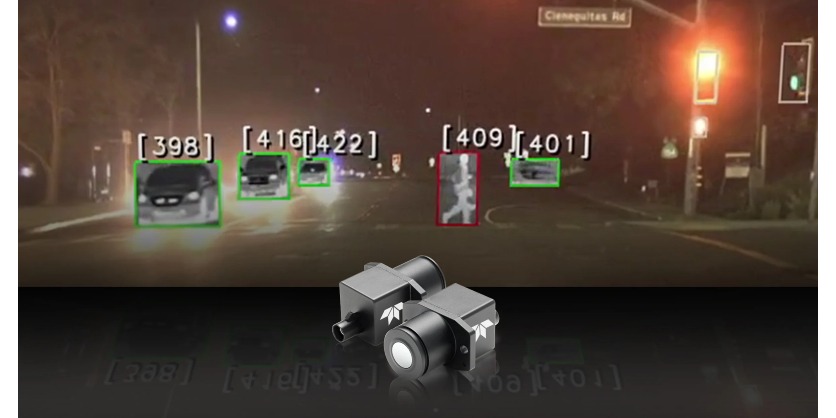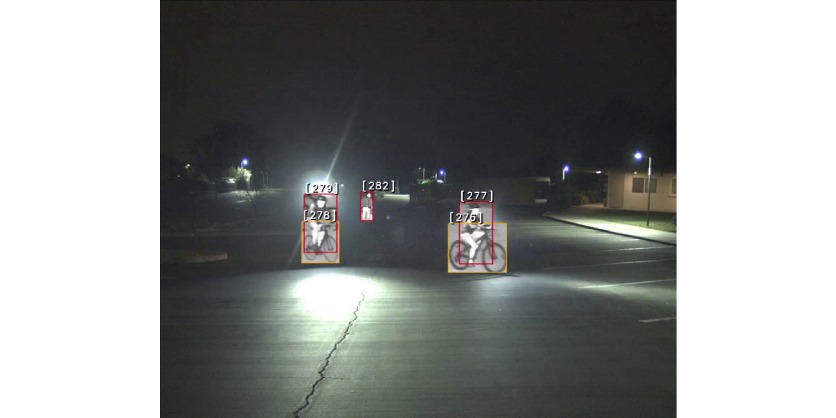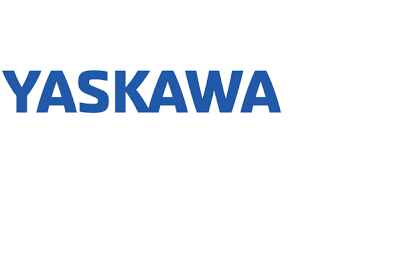Valeo and Teledyne FLIR Announce Agreement and First Contract for Thermal Imaging for Automotive Safety Systems
January 18, 2024

Valeo, the key technology partner of mobility actors around the globe, and Teledyne FLIR, part of Teledyne Technologies Incorporated, have started a strategic collaboration to bring thermal imaging technology to the automotive industry to enhance the safety of road users. Together, the team already secured a major contract in late 2023 from a leading global automotive OEM to deliver their new thermal imaging cameras as part of a new generation of advanced driver-assist systems (ADAS) driver-aide technology to improve vehicle and road safety.
Valeo and Teledyne FLIR will deliver the first Automotive Safety Integrity Level (ASIL) B thermal imaging technology for night vision ADAS. This system will complement Valeo’s large range of sensors and rely on Valeo’s ADAS software stack to support functions such as automatic emergency braking (AEB) at night for passenger and commercial vehicles as well as for autonomous cars. The collaboration brings together Valeo, the world’s leader in automotive camera technologies, with Teledyne FLIR, the world leader in thermal imaging technology, to create the next generation of multispectral sensor fusion systems for automotive safety.
Valeo will leverage its extensive expertise in automotive vision systems to integrate Teledyne FLIR thermal vision technology and supply the OEM with a complete solution for night vision, including perception software based on Valeo’s AI and Graphical Visualization stack.

“Valeo has the most extensive portfolio of perception solutions on the market and we are looking forward to working with Teledyne FLIR to add thermal imaging to our offer,” said Marc Vrecko, president of Valeo comfort and driving assistance. “This new camera and its perception software will complement our offer and improve the overall performance of ADAS and autonomous vehicles systems to bring even more safety to road users, especially at night.“
Marc Vrecko, president of Valeo comfort and driving assistance
“Teledyne FLIR continues to make tremendous strides in developing and incorporating thermal imaging into automotive safety systems, from aftermarket driver-aid technologies to autonomous robotaxis,” said Paul Clayton, vice president and general manager, Teledyne FLIR. “Our work with Valeo enables us to make thermal imaging technology ubiquitous within transportation, from passenger cars to semi-trucks, allowing more drivers and automated vehicle safety systems to see in complete darkness, in cluttered environments, and in adverse weather where other incumbent sensors struggle.”
Paul Clayton, vice president and general manager, Teledyne FLIR
Improving Roadway Safety for Vulnerable Road Users
In the United States, preliminary data from the Governor Highway Safety Association found that 2022 marked the deadliest year on record for pedestrians since the organization began tracking such data in 1981. The record number of pedestrian deaths, with three-quarters occurring at night, highlights the need to do more to protect vulnerable road users, which also includes bicyclists and large mammals. In response, regulators in the United States are introducing proposed rulemaking for stricter testing standards for automatic emergency braking (AEB) systems, including requiring testing at night. However, existing AEB systems do not include thermal imaging, which is crucial for detecting and classifying living objects in low-light conditions and inclement weather.
More Information
Valeo and Teledyne FLIR will display automotive solutions during the Consumer Electronics Show (CES) in Las Vegas, Nevada, January 8 -12, 2024, at the Las Vegas Convention Center Central Plaza, booth CP-17.
Teledyne FLIR automotive program
Related Product
Teledyne Announces New Ladybug6 Cameras for High Accuracy 360-Degree Spherical Image Capture
Teledyne FLIR Integrated Imaging Solutions is pleased to announce the all new Ladybug6— the latest addition to its field proven Ladybug series. Ladybug6 is the leading high-resolution camera designed to capture 360-degree spherical images from moving platforms in all-weather conditions. Its industrial grade design and out-of-the-box factory calibration produces 72 Megapixel (MP) images with pixel values that are spatially accurate within +/- 2 mm at 10-meter distance.


